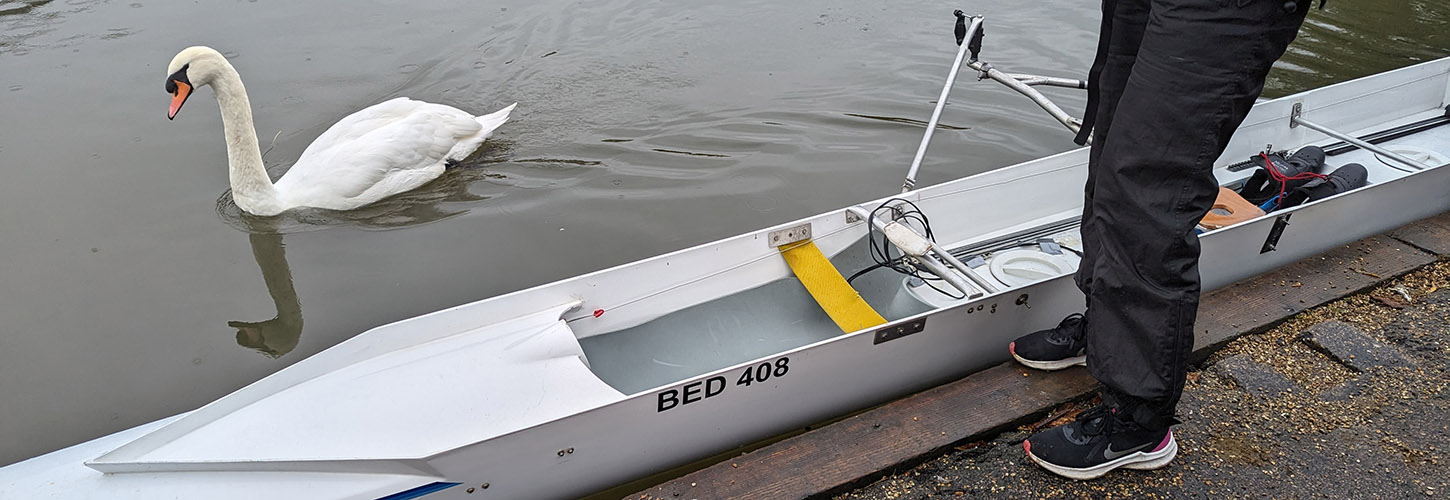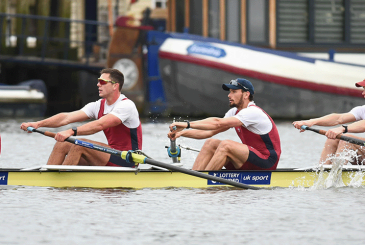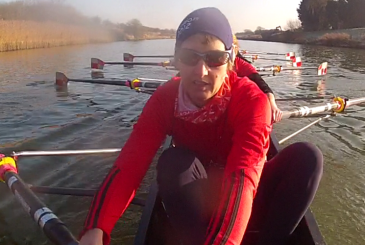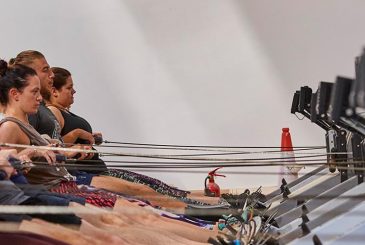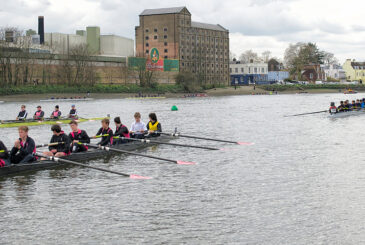Sitting still outdoors for over an hour on a cold day is a recipe for the shivers. These simple tips – learned the hard way by an experienced cox – will keep you as warm as possible in the circumstances.
Tip 1: Trap air in your layers
Wearing more clothes is good. But what these layers are is just as important. You’ll be warmer if your clothes trap air between and within your layers – this means wearing looser-fitting clothes and looser-weave fabrics. So wear jogging bottoms rather than leggings and fleece jumpers rather than tight ‘tech tops’.
My favourite coxing trousers have a fleece lining, which makes them unbelievably toasty!
Tip 2: Socks – choose long and fluffy
Trainer socks look good but having bare ankles is a recipe for cold feet. Wear longer socks – knee-highs are great! – and continuing the ‘trapping air’ idea in Tip 1, choose loose, fluffy ones. These will also stop cold air getting up your trousers.
The only problem with these is that they can make your shoes quite tight because they’re so bulky, and that in itself will discourage the blood circulation to your feet that you need to keep them warm. Get round this by tying lace-up trainers more loosely or wearing a size larger if you can, perhaps by borrowing from a family member.
Tip 3: Neck warmers
A fleece neck warmer or ‘buff’ does for your neck what those long fluffy socks do for your ankles. Wearing one stops cold air getting down your top. It also keeps your throat (vital for coxing calls, of course) – and the blood that’s passing through the veins in your neck – warm.
I prefer a neck warmer to a scarf because it doesn’t work loose and there’s no chance of an end becoming untucked and trailing in the water or getting tangled in my life jacket. A well-wound scarf can work just as well, though.
Bobble/beanie hats or not?
While we’re talking about headgear, I prefer not to wear a woolly hat in winter, and stick with my cap even on the coldest days. Why? Because I feel I can hear just that tiny bit better and I use those peripheral sounds – such as the noise of another crew or my own crew’s catch or finish timing – to keep the boat safe and going as well as it can. But this is a very subtle distinction, and wearing a warm hat is important because you lose a lot of heat out of your head.
Tip 3: Ski trousers
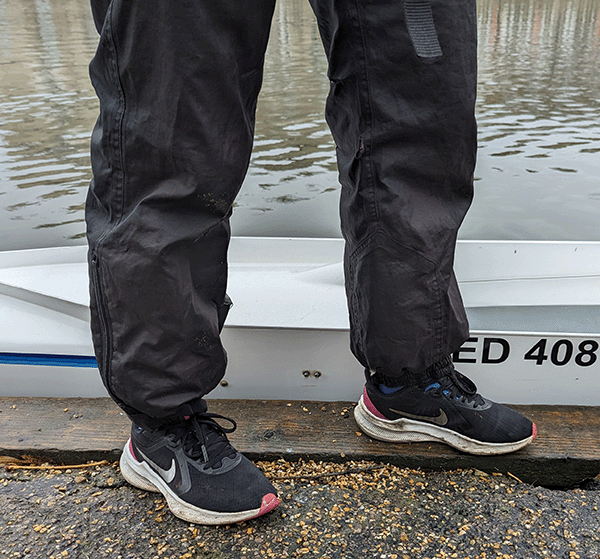
You know how babies are put in ‘ski suits’ when they’re outdoors in prams in winter? Like us coxes, they’re sitting still outdoors for a prolonged period, so we need to dress like them!
Look out for cheap ski trousers in winter ‘middle aisle’ sales at discount supermarkets that are as light (in weight) and flexible as possible. Choosing a size larger than you’d ski in is a good idea to give you maximum flexibility when sitting in the stern of a boat. This also traps as much air as possible (see Tip 1).
Tip 4: Camping mats in front loaders
Credit to York City RC for this one, which I only learned after over a decade of getting cold lying in the fronts of boats against a part of the hull that’s actually under water. This – along with the ski trousers – was a game changer for me when it comes to winter coxing!
Foam camping mats are mainly designed to insulate you from cold ground and to give you a tiny bit of softness when camping. Being thin and light makes them ideal for backpacking, but also means they don’t add any extra weight to the boat or bulk up the coxing area in a way that would compromise your exit in the event of a capsize.
You should be able to leave the mat in the boat permanently. It should stay in, perhaps with the help of a few bits of tape, even when the boat’s upside down on the rack.
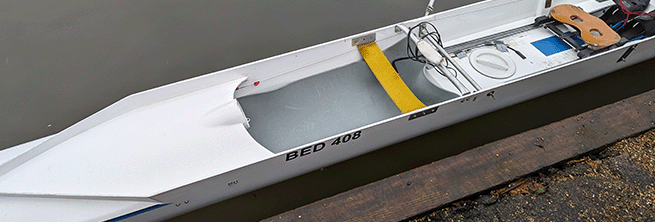
Tip 5: Stay dry!
You’ll get colder quicker if you’re wet. So wear a waterproof jacket and waterproof trousers when it’s raining.
Waterporoof socks will keep your feet drier too, although your feet will still get colder on wet days because of the wet trainers wrapped round them. A cheap alternative is to put plastic bags over your socks before you put your shoes on.
Tip 6: Handwarmers for head races
Consider taking a handwarmer to the start on chilly head race days. I wouldn’t use these during a training outing because you won’t have the opportunity to fiddle around getting this out of your pocket and then spending a few minutes clutching it with your hands off the rudder strings. You’ll usually have time to do this during marshalling.
You can get packs of single-use handwarmers (a less sustainable option), or reusable ones that you ‘recharge’ by boiling them for a few minutes.
Photo: Janet Vickers


